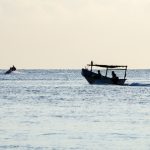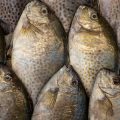Understanding Water Currents
If you’ve ever tossed a stick into a stream and watched it float away, you’ve already observed water currents in action! Water currents are simply the movement of water—sometimes fast and strong, other times slow and gentle. In rivers, streams, and even lakes, these moving waters are always at work, shaping the environment for fish and other wildlife. There are two main types of currents: surface currents, which flow on top where we can easily see them, and subsurface currents that move below the surface. Each type creates unique spots where fish love to gather. In rivers, for example, fast-moving riffles provide oxygen-rich water, while slower pools offer resting places for fish. In lakes, wind-driven currents can push food into certain areas, drawing fish in for a snack. By understanding how these currents shape underwater landscapes—carving out deep holes behind rocks or piling up gravel in bends—we can start to predict where fish might be hiding. It’s like learning to read nature’s map, one current at a time!
2. Why Fish Care About Currents
Have you ever wondered why certain fish seem to hang out in fast-moving water, while others prefer the calm, slow-flowing sections of a river or lake? Understanding how fish interact with water currents can actually help you predict where theyre likely to be found! Fish care about currents for several important reasons: food, shelter, and safety from predators. Lets dive into the fascinating ways different fish use currents to survive and thrive.
How Currents Affect Fish Behavior
Currents act like highways in the underwater world. Many fish use them to travel, find food, and even hide from danger. Some species, like trout and salmon, love swift waters because these areas carry a steady supply of oxygen and food. Other fish, such as catfish or bass, often stick to slower waters where they can conserve energy and take cover.
Different Preferences: Fast vs. Slow Currents
| Fish Type | Preferred Current | Main Reason |
|---|---|---|
| Trout/Salmon | Fast-moving | More oxygen and drifting insects (food) |
| Bass/Catfish | Slow-moving or still water | Energy conservation and ambush hunting |
| Panfish (Bluegill, Crappie) | Mild or sheltered currents | Shelter from predators; easy feeding zones |
The Role of Shelter and Safety
Just like us humans need a safe place to relax, fish use rocks, logs, and bends in rivers as natural shelters. These spots break up the current, creating calmer “eddies” where fish can rest without being swept away. Plus, hiding behind cover keeps them safe from larger predators cruising in the main flow.
Currents as Food Delivery Systems
One of the coolest things about water currents is that they carry food—like insects and tiny crustaceans—directly to hungry fish. By positioning themselves just right in the current, fish can snack all day long without having to move much! Thats why youll often spot active feeders waiting just downstream of rocks or near riffles where food drifts by regularly.
![]()
3. Reading the Water: Tips and Tricks
Learning to “read” the water is a skill every angler can develop, and its especially fun when families do it together. When youre out by the river or lake, start by looking for surface ripples—those little waves can tell you a lot! Sometimes, small fish swim near the top and make these ripples, but bigger fish often hide just below, waiting for an easy meal. Teach your kids to look for places where the current slows down or speeds up; these are called current seams. Fish love to hang out in these spots because food naturally drifts by them.
Eddies are another important clue. An eddy is a swirling section of water that forms behind rocks, logs, or bends in the river. These calmer pockets provide resting spots for fish and are perfect areas to cast your line. Make it a game with your children—who can spot the most eddies along the bank? Bring along a pair of polarized sunglasses for each family member if you have them; these help you see under the water’s surface and notice subtle changes.
Encourage everyone to observe not just with their eyes, but also with their ears. The sound of rushing water can signal faster currents, while quieter areas might mean slower water where fish feel safe. You can even toss a leaf or stick into the water and watch how it floats—this teaches kids how different parts of the river move at different speeds.
Finally, take time as a family to talk about what you see before casting your lines. Ask questions like, “Why do you think fish would want to rest behind that rock?” or “What makes this part of the stream special?” Sharing observations helps everyone learn together and makes your fishing adventure even more memorable.
4. Gear Up: Tools for Watching Currents
When it comes to reading water currents and predicting where fish might be hiding, having the right gear can make all the difference—especially when you’re out with your family for a day of fun fishing. Luckily, you don’t need a lot of fancy equipment. Here’s an overview of some simple tools and easy-to-use apps that help families better see and understand currents while out on the water.
Essential Tools for Spotting Currents
Some of the best tools are surprisingly basic but super effective. Let’s take a look at what you should pack:
| Tool | How It Helps | Why Families Love It |
|---|---|---|
| Polarized Sunglasses | Cuts glare off the water, letting you see surface patterns and subtle flow changes more clearly. | Keeps eyes comfortable and helps everyone spot hidden fish hangouts together! |
| Small Floats or Bio-Degradable Markers | Shows exactly how fast and in which direction the current is moving. Just drop one in and watch! | Kid-friendly, interactive, and makes learning about currents hands-on and memorable. |
| Waterproof Notebooks & Pens | Lets you jot down observations about current speed, direction, or fish sightings. | Makes it easy to keep track of what works (and what doesn’t) as a family adventure log. |
Family-Friendly Apps for Current Tracking
Technology can also lend a hand in understanding water movement. Here are some app ideas that work well for families:
- Fishbrain: This community-driven app lets you check fishing reports nearby—including info on water conditions and currents from other anglers.
- Navionics Boating App: Offers detailed maps showing tides, currents, and underwater structures; perfect for planning your next spot together.
- Tides Near Me: A super simple app to track tides and basic current changes—great for quick checks before heading out.
Quick Tip: Make It a Game!
If you want to get your kids excited about learning how to read currents, turn it into a game! See who can spot the fastest-moving current using floats, or have a contest to guess where the current will carry a leaf. Using these simple tools not only helps everyone predict where fish might be, but also turns fishing into an engaging learning adventure.
5. Fun Family Activities to Practice
Learning how to read water currents and predict fish locations can be a fun adventure for the whole family! Whether you’re at home or spending time by the river, lake, or beach, there are plenty of interactive activities and games that make discovering water movement and fish behavior both educational and enjoyable.
At-Home Water Experiments
Bring the science of currents right into your kitchen or backyard. Fill a clear tub with water and use food coloring or small floating objects like leaves or toy boats. Let your kids gently blow across the surface or pour water from different angles to see how currents form and move. Challenge everyone to guess where the “fish” (floating objects) might end up!
Current Detective Game
Create a game where each family member takes turns being the “current detective.” Set up obstacles in the tub (like rocks made of playdough) and let others predict how water will flow around them. Award points for correct guesses about where objects will collect—just like fish do in real streams.
Outdoor Water Exploration
If you’re near a natural body of water, turn your outing into a hands-on learning quest. Have everyone look for clues: ripples, eddies, or calm pools behind rocks. Give each child a notebook to draw what they observe and mark “fishy spots” where they think fish might be hiding based on water movement.
Family Fishing Challenge
Once you’ve practiced spotting good fishing areas, split into teams and see who can catch (or spot) the most fish using your new skills! Celebrate every discovery, whether it’s a little minnow darting in an eddy or a big bass lurking near submerged logs.
Making Memories Together
By turning reading water currents into playful challenges and shared adventures, families not only build important fishing skills but also create lasting memories. Every ripple becomes a clue, every guess a chance to learn together—and every day by the water is another story waiting to be told.
6. Local Hotspots: Examples from American Rivers and Lakes
One of the best ways to put your current-reading skills to the test is by visiting some of America’s most famous fishing spots. Let’s take a look at a few iconic locations, and hear how anglers have used their knowledge of water currents to land unforgettable catches.
Mississippi River – Chasing Catfish in the Eddies
The mighty Mississippi is legendary for its big catfish. Seasoned locals know that after heavy rains, strong currents form swirling eddies behind submerged logs and river bends. I remember a trip with my son last summer—watching the water, we spotted an eddy where the flow slowed just behind a fallen tree. We dropped our bait there, and within minutes, he was reeling in a channel catfish almost as big as his arm! Reading those subtle shifts in current made all the difference.
Lake Erie – Walleye on the Move
Lake Erie is another hotspot, especially for walleye fishing. During spring, when warm and cold waters mix, currents form near underwater humps and drop-offs. My daughter and I joined a local guide who showed us how to spot these areas by watching for ripples and changes in water color. We anchored just upstream of a current break—and sure enough, we caught several walleyes cruising along the edge where fast water met still pockets.
Columbia River – Salmon Success Stories
The Columbia River draws anglers from all over hoping to catch salmon. Experienced fishers here know that salmon rest in slower water behind rocks or islands during their upstream journey. Last fall, I chatted with a grandfather-and-grandson duo who’d been coming for years. They told me their secret: always check for “soft water” along the riverbank after a rain—those calm patches often hold tired salmon waiting out the current before moving on.
Your Turn: Try Local Waters
No matter where you live in America, reading water currents can help you find fish others might miss. Head to your local pond, lake, or river and look for places where swift water meets calm pools or swirls around obstacles. Talk with other anglers—everyone has their favorite story about how reading the water led to an epic catch! Fishing isn’t just about luck; it’s about learning to see what’s happening below the surface.

